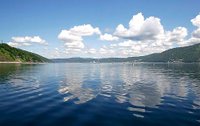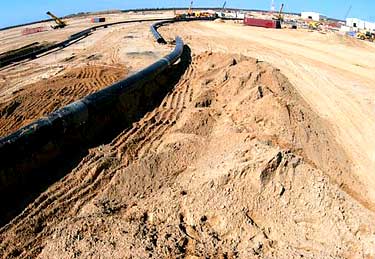The Carnival resumes now at Greener Mag. Many thanks to Steve over at
Baloghblog for hosting last week's zesty green COTG, which, as you all know is sponsored each week by co-founders
City Hippy and
Triplepundit.
This week's show is lush and fun and full of sun so put down your garden tools, grab grandma and the kids, it's Carnival!
First up from Sameer at Transmorgified a little ditty 'bout bicycles, gasoline, food and, oh well you better read it for yourself.
All I know is that as a veggie I get 196 miles to the gallon.

Pussycat Predicament by Melissa at La Green Living Blog. Melissa's post explores the problem of cats as predators (specifically, the harmful effect on the bird population) and how we can keep him healthy and happy, while also protecting other creatures. Personally I think this sounds like A Tale of Two Kittys, er... one indoors and one outdoors.
Next our "green" evangelical Don at Evaneco, who "religiously" (sorry Don) produces the most interesting and thoughtful pieces presents a debate he calls Sacramental Ecology
which, you've probably read around the web. Evangelicals are trying to sort out what it means to be an ecologist, and how to reconcile their faith with environmental stewardship.
From Treehugger an Interview with Tony Brown of the Ecosa Institute
 Tony Brown is the founder and director of the Ecosa Institute, the only design program in the US devoted entirely to sustainability. The Ecosa Institute was founded in the belief that design based on nature is critical to the search for a new design philosophy.
Tony Brown is the founder and director of the Ecosa Institute, the only design program in the US devoted entirely to sustainability. The Ecosa Institute was founded in the belief that design based on nature is critical to the search for a new design philosophy.
 Triple Pundit has a "green" diptych entry this week with Why Is Population Growth Always Considered Good?
Triple Pundit has a "green" diptych entry this week with Why Is Population Growth Always Considered Good?
Why is population growth so often assumed to be a good thing? Is economic well-being really dependant on it? 3P Exposes some biases in typical reporting on this issue.
And something NEW!!! The Dictionary of Sustainable Management, a blog-powered dictionary of terminology relevant to sustinability and business. All definitions are open to public comments and the coolest things - if you're a blogger and you reference a definition in your posts, your blog will appear under the definition too (via trackbacks) so that eventually, we'll have definitions, comments, and a host of usage references on the site!
Nicholas thinks the dictionary is going to be something pretty useful, I concur so why not consider a link, besides, you'll get to make up phrases for the dictionary like "green diptych!"
While we're in California Siel a Green La Girl suggests a few nifty hookups for earning some "Moolah for your toxic trash."
By the way, that reminds me, anyone know who cleans up after these Carnivals leave town?
Now, if I may direct your attention to the center ring, as Steven Silvers presents The Body Shop, outrage, destruction, the "evil empire" and death...OK, I went too far, but Steven is right on with his level assessment of The Body Shop’s Aquisition an agreement to be bought by cosmetics giant L’Oreal furthering the separation between two types of corporate reform activists –- the pragmatists who see progress by working within the market economy and outraged ideologues who dream of destroying it altogether.
Tracy at EcoStreet tells How To Green Your Life while looking at small ways that you can make a big difference. Little things
that you can do now that will help save the planet.
Judy Kingsbury our favorite Savvy Vegetarian and Greener Mag Advice Columnist has this report on the Big Green Summer: 10-Week Immersion Project in Green Living in Fairfield Iowa, "greenest" little town in the Midwest. If you think 'green midwestern town' is an oxymoron? "Trust me," Judy says, "it's not!"
 Back to the east coast and Rebecca at Greener Miami who takes us out for a ride - on the greener side with her journey across Miami one very special, green day recently, she calls the "Transportation Challenge," a free transit day (if you had the "Earth Day" coupon!) We ride around town all day as Rebecca samples the delights of Miami. (Wait, was that South Beach?)
Back to the east coast and Rebecca at Greener Miami who takes us out for a ride - on the greener side with her journey across Miami one very special, green day recently, she calls the "Transportation Challenge," a free transit day (if you had the "Earth Day" coupon!) We ride around town all day as Rebecca samples the delights of Miami. (Wait, was that South Beach?)
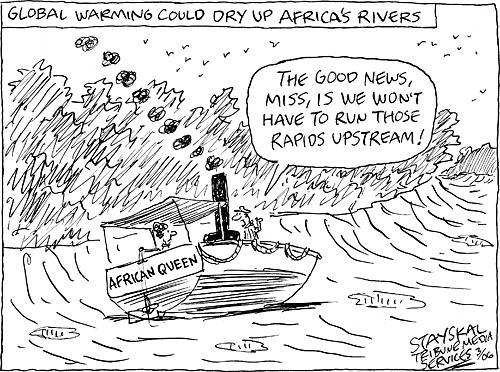 MaryEllen, AKA marigolds2, enviro writer for the group blog The Blue Voice, writes Water Water - Everywhere?
MaryEllen, AKA marigolds2, enviro writer for the group blog The Blue Voice, writes Water Water - Everywhere?
about global warming and the pending world water crisis. Mary also invites you to her Squidoo lens, Stranger in a Dry Land. Come to think of it, where do Squidoo live in a dry land?
Dirty Greek, George Peterson brings us an update on the
Forest Image Registry.org ,which launched this week. The
F.I.R. Project uses interactive Google satellite imaging and user commentary to let you experience America's great National Forest lands. As a visitor to the
Blog, you are invited to contribute your own forest images to the online
Fliker archive tell recount favorite forest lore and let the administration know that our forest land are not theirs to sell.
Dirty Greek, Sustainablog, High Earth Orbit and Greener Magazine are proud partners in the F.I.R. Project, we invite you to join us. Together we can preserve America's National Forests for future, green generations.

Here is a badge for the forests that we hope you'll display on your site, inviting others to "see the forest for the trees."

Now, still thinking green, we turn to
Greenthinkers where Scott Smith writes his follow-up to a previous post about
Ecoist handbags, made from recycled candy wrappers - how sweet it is!
Then, Enrique at
Commonground, shares this link to culture wonky Slate Mag, asking
"Is Whole Foods Wholesome?
The dark secrets of the organic-food movement."Jaquie from
Enviropundit tackles a natty problem
Navigating Federal Energy Programs . Better her than us.

New to our Carnival of the Green tour are authors Sally and Sarah Kate Kneidel -
Veggie Revolution, a book about factory farming and sustainable farming, Fulcrum November, 2005 - who post at
Veggie Revolution, the blog, about their ongoing inquiries into the nature and methodology of mankind, vegetarianism and the environment.
Here ecologist Ken Kneidel provides an excerpt from their forth coming book about a recent trip to Honduras in search of the virgin rainforest, a search that "failed." Learn the truth they found and what it means for the future of all of us who share the threatened world of
Monkeylala.A humour
piece on global warming at Terry.
Submitted for your consideration, Dr. David Ng of the
Advanced Molecular Biology Laboratory (AMBL), Michael Smith Laboratories sends us this
‘Glass Half Full’ Take on the Subject of Global Warming, by David Secko.
With her piece
Ethical Nuts CityHippy's new Deputy Editor, Becky, makes her green blog debut with an interesting post about the not-so-ethical origins of the humble and much-loved cashew nut. Gesundheit!
One we read faithfully, Jane Perrone of
Horticultural goes off on a mini rant about taking responsibility for the waste we reproduce. It's called
Reduce, reuse, stop moaningJane is also deputy news editor at
 Guardian Unlimited
Guardian Unlimited, so she knows her 3 "r"s, rantin, ritin and rhythmatic.
...and, from Jasmin,
The Worsted Witch in something we like to call, "these paints don't fit," comes
Color me bad, why regular paints are bad for us and the environment, followed by her alternatives in
Color me better. What would a Carnival be without someone "tilting" a cap at wind mills and, as he shows us in this post, Groovy Green
What would a Carnival be without someone "tilting" a cap at wind mills and, as he shows us in this post, Groovy Green knows where to find 'em. Talkin 'bout Wind Energy in the movies folks with Mission Impossible 3. Thanks Michael.
Of course we'll have to ask the Brits when we get to MI 5.

Nancy from
The Garden's Gift zeros in on
Xeriscape in the Florida yard but be apprised, there are good lessons here for anyone engaged in creating an earth friendly landscape.
So we've just about arrived at the end of this week's Carnival of the Green but before you go, please note that Carnival #21 goes north to Canada next week with Scott Smith and crew at
Green Thinkers. Be sure to dress warm.
This Carnival of the Green tour originated in the minds of
City Hippy and
Triplepundit. For more information on hosting a Carnival of the Green or contributing an article please visit the Carnival Announcement Page.
We're out of electrons so for our own contribution this week we refer you to Green home, a beginning.

Thanks, your host Harlan. From all of us at Greener Magazine have a great week and please, keep it "green" out there.
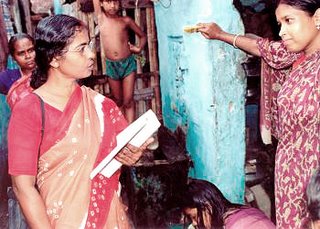 Long gone are the days when door-to-door salesmen plied their trade on American streets. New ways of doing business have emerged: mega shopping centers, fashionable urban town centers and of course, Home Shopping Network and the internet have all changed the way Americans buy. But that doesn't mean that business has given up on the tried and proven old model that produced such giants as The Fuller Brush Co., Mary Kay, and venerable Sears and Roebuck.
Long gone are the days when door-to-door salesmen plied their trade on American streets. New ways of doing business have emerged: mega shopping centers, fashionable urban town centers and of course, Home Shopping Network and the internet have all changed the way Americans buy. But that doesn't mean that business has given up on the tried and proven old model that produced such giants as The Fuller Brush Co., Mary Kay, and venerable Sears and Roebuck.







 This week's show is lush and fun and full of sun so put down your garden tools, grab grandma and the kids, it's Carnival!
This week's show is lush and fun and full of sun so put down your garden tools, grab grandma and the kids, it's Carnival!

 Tony Brown is the founder and director of the Ecosa Institute, the only design program in the US devoted entirely to sustainability. The Ecosa Institute was founded in the belief that design based on nature is critical to the search for a new design philosophy.
Tony Brown is the founder and director of the Ecosa Institute, the only design program in the US devoted entirely to sustainability. The Ecosa Institute was founded in the belief that design based on nature is critical to the search for a new design philosophy. 
 Back to the east coast and Rebecca at
Back to the east coast and Rebecca at  MaryEllen, AKA marigolds2, enviro writer for the group blog
MaryEllen, AKA marigolds2, enviro writer for the group blog 

 New to our Carnival of the Green tour are authors Sally and Sarah Kate Kneidel -
New to our Carnival of the Green tour are authors Sally and Sarah Kate Kneidel -  Guardian Unlimited
Guardian Unlimited
 Nancy from
Nancy from 

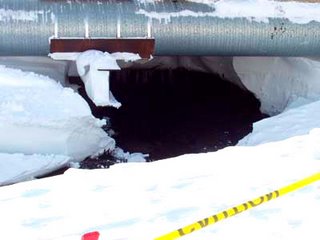

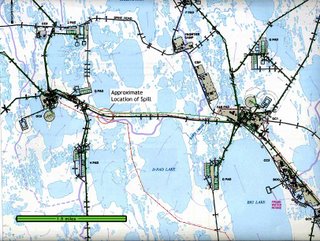

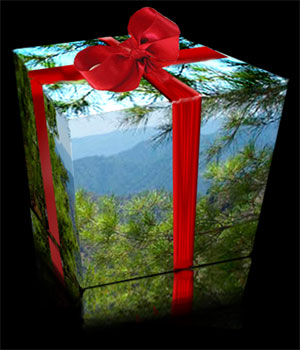 Green philanthropy, like all gifting, is generally motivated by the sincere wish to return some measure of value, to assist a favorite cause or endeavor. This week such a gift came to
Green philanthropy, like all gifting, is generally motivated by the sincere wish to return some measure of value, to assist a favorite cause or endeavor. This week such a gift came to 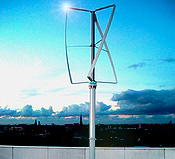 We've waited years for an efficient home version of the wind powered turbine generator and here, new all over again, is the "Turby" by, who other than the Dutch team at
We've waited years for an efficient home version of the wind powered turbine generator and here, new all over again, is the "Turby" by, who other than the Dutch team at 